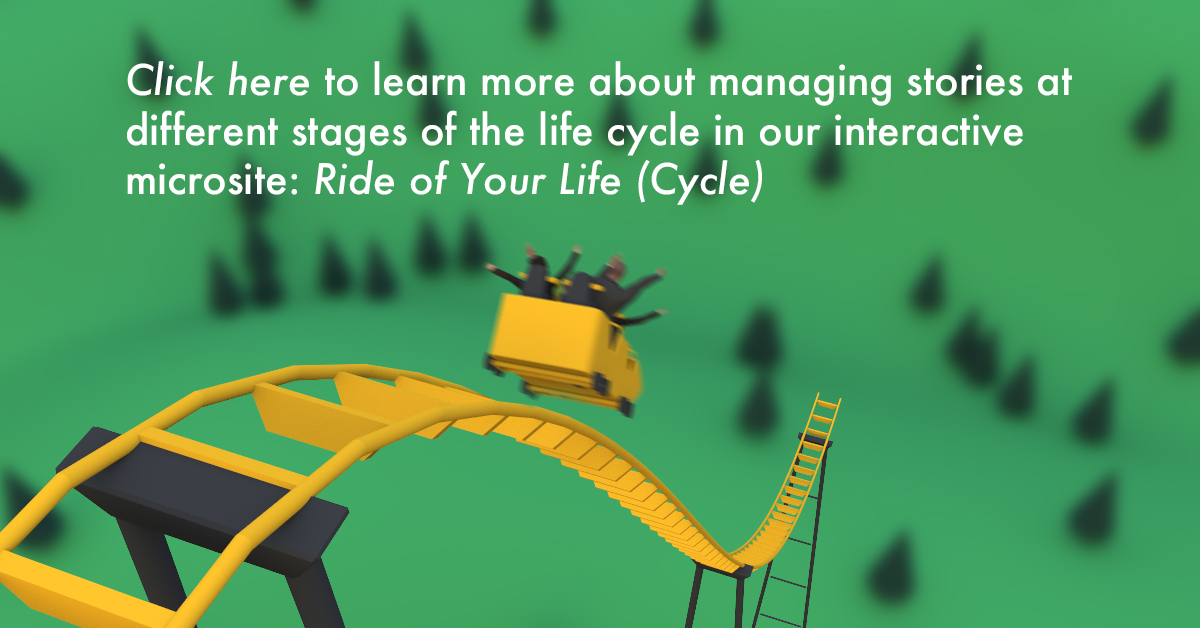I was reading an article yesterday that stated a truly astonishing fact. Drumroll please…

Microscopic colonists? The article continues…
‘…this hidden half of ourselves – our microbiome – is rapidly transforming understanding of diseases from allergy to Parkinson’s. The field is even asking questions of what it means to be “human” and is leading to new innovative treatments as a result.’
This is one of the greatest beginnings to any piece of scientific storytelling I’ve ever read. The article goes on to explain in detail how this emerging field of science is changing our thinking and treatment approaches in a wide range of diseases with the potential to topple some of our greatest challenges such as cancer and dementia. I was hooked from the first to last line, by design, by the author. Thirty minutes later I stopped and reflected on what had just happened…
The fact is astonishing, but the implications are amazing. The real power comes from explaining what the scientific facts mean for our understanding of how to live a healthy life. A subject we at Make Believe have dedicated many years considering with our clients in the Healthcare space. Why?
Explaining breakthroughs of any kind can be hard work but this is especially true for high level scientific breakthroughs. It is common for teams to have dedicated a large part of their lives to improving scientific understanding and developing a single medical treatment with extensive testing and validation. Yet it is common for these teams to share only half a story. The evidence will be solid, the logical argument in place… but emotionally it doesn’t connect with folks.
Why does this happen and why is it important?
It happens because most of us still believe logic is king and that the science/data/facts will be enough to do the job of engaging people. But we’re not purely logical animals and this assumption can be a common trap in scientific storytelling. Anyone with a passion for sport, or has ever fallen in love, read a biased newspaper article, been upset by a passing comment, delivered a speech or had a child (or ever been a child) knows this to be true. Who hasn’t walked into a meeting room to deliver a big presentation armed with all the logic and facts they could wish for, but still ends up losing the argument (please tell me it’s not just me).
What moves us aren’t facts, data or logic, it’s how we feel about the facts, data or logic. Feelings are like thought propellants, powering logic along and driving decision making. The ancient metaphor depicting the mind as a tiny rider on an enormous powerful elephant of emotions is as true as ever. If an elephant feels like charging, it charges. The rider has little or no control.
Hold on! (I hear you cry). What about logical deduction, scientific rigour and evidence-based medicine? These are critical BUT no more than input data for our minds to consider – in the end it’s a decision, a call, a belief that moves us to take action. Another word for belief is the story we tell ourselves. We all run on stories, the world runs on stories.
That’s why it’s important you proactively author your story. Truth is, if you don’t the world will do it for you and you run the risk of not cutting through the noise, being misunderstood or simply lacking the support to make a real impact. So how do you author a scientific story? First, you must land the basics by answering the following questions:
WHY – is your scientific story important – why should they care?
WHAT – is it exactly, how will it fit in and improve the existing paradigm?
HOW – it should be used and with whom for optimal effect?
People need these answers at every stage of the product life cycle, from disease area strategy through to life cycle extension. The nature, style and length of scientific storytelling evolves from hypothesis and mission quests to more detailed treatment and mode of action stories, but the need remains. Once you have answers to these questions however, the real work begins. You need to craft your story against the following characteristics that are common with stories that engage ‘head and heart’ and can be effectively implemented – the 5 C’s:
CREDIBLE
supported by insight, evidence and key stakeholder consensus
COMPELLING
connects ‘head and heart’ as well as explaining the promise for the future
CONCISE
an ‘expandable’ elevator pitch that captures the reasons to belief and evidence
CONSISTENT
provides one story and voice across multiple touchpoints and stakeholders
Continual
ensuring the story you tell has the ability to build, evolve and grow with time
We’ve created compelling scientific stories for many of the world’s largest healthcare companies and organisations. The process is an iterative one from insight gathering through to creative development and crafting. Each story is unique in voice and content, but the format is always the same – a story that can be shared in a 3 second snapshot, a 30 second elevator pitch and a 3 minute dramatisation.
Allowing the story to be shared consistently across a wide range of touchpoints and partners so they in turn can bring it to life across different media, cultures and continents.
Aligning on a credible, compelling, concise and consistent science story throughout the product life cycle ensures you always have the right story, right time, right place. What’s more people will understand WHY you exist. A sentiment best expressed by Henri Poincaré
“Science is built of facts the way a house is built of bricks; but an accumulation of facts is no more science than a pile of bricks is a house.”

Paul is the founder of Make Believe. He has worked both client and agency side for ?WhatIf !, the innovation agency, Coors and advertising agency AMV BBDO
